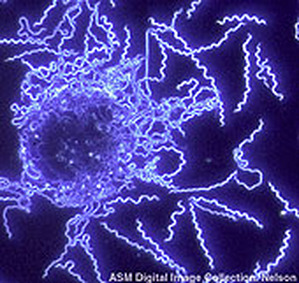Persistence

B. burgdorferi can persist in humans and animals for months or years. As shown by some studies, the infection can persist despite taking antibiotics.
Various survival strategies of B. burgdorferi have been formed of how the pathogen can persist in its host.They include:
- The physical sequencing of B. burgdorferi in sites less accessible to the immune system and antibiotics, such as the brain and central nervous system.
- Intracellular invasion - B. burgdorferi can invade a variety of cultured cells and by hiding inside these cells during human infection, it may be able to avoid the immune system and be protected to some degree against some antibiotics.
- Altered structural forms- The formation of rounded forms of B. burgdorferi cells, have been observed in vitro (outside a livingorganism), in vivo (in the living organism) and ex vivo (in an artificial environment). These altered forms have a survival function, and are not just end stage products. Some data shows these rounded cells are virulent and infectious, are able to survive under unfavorable conditions, and may convert to in vitro, when conditions are most favorable. They have a smaller surface area and express some different surface proteins from spirochetes.
- Antigenic variation and gene expression - B. burgdorferi can vary its surface proteins in response to an immune attack and avoid the immune system to cause an infection
- Immune system suppression - As shown by one study, the formation of immune complexes can cause false-negative antibody tests of blood and cerebrospinal fluid.
